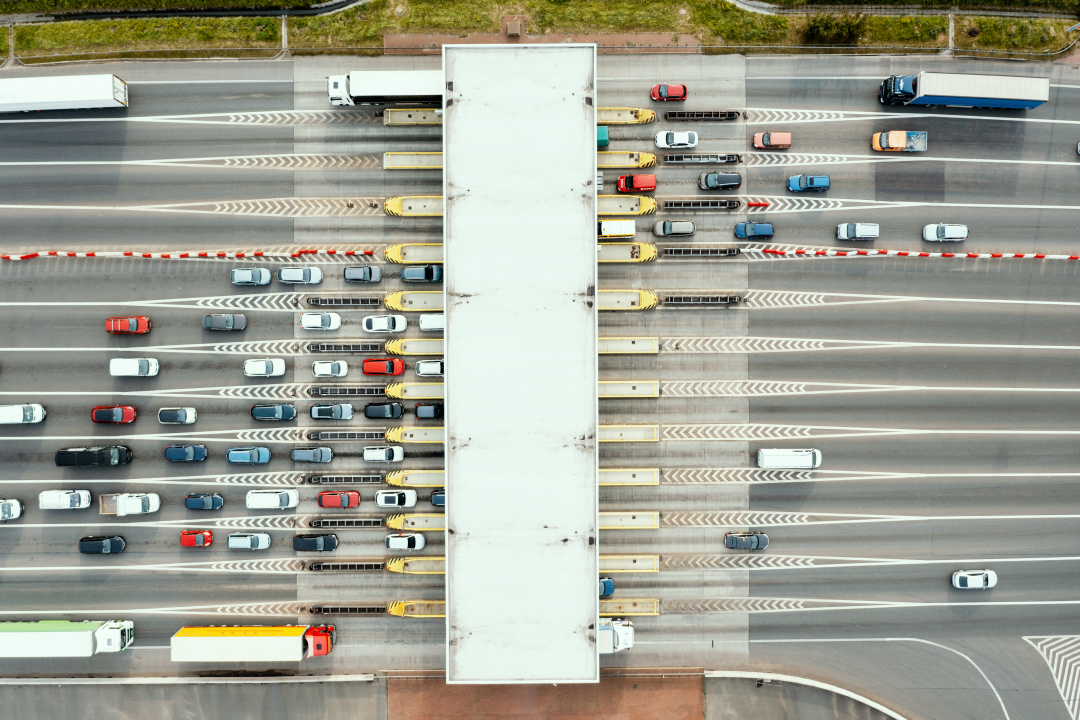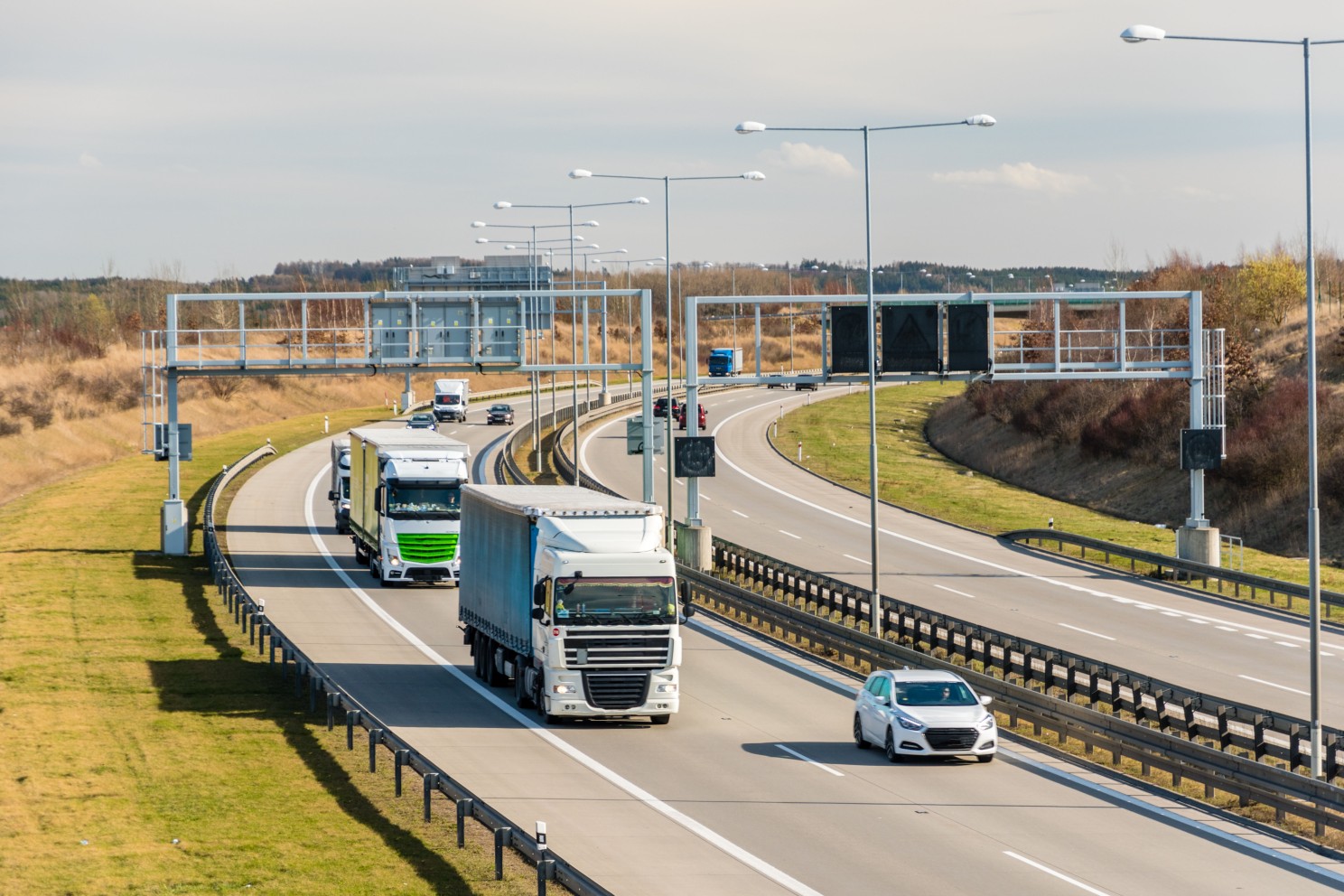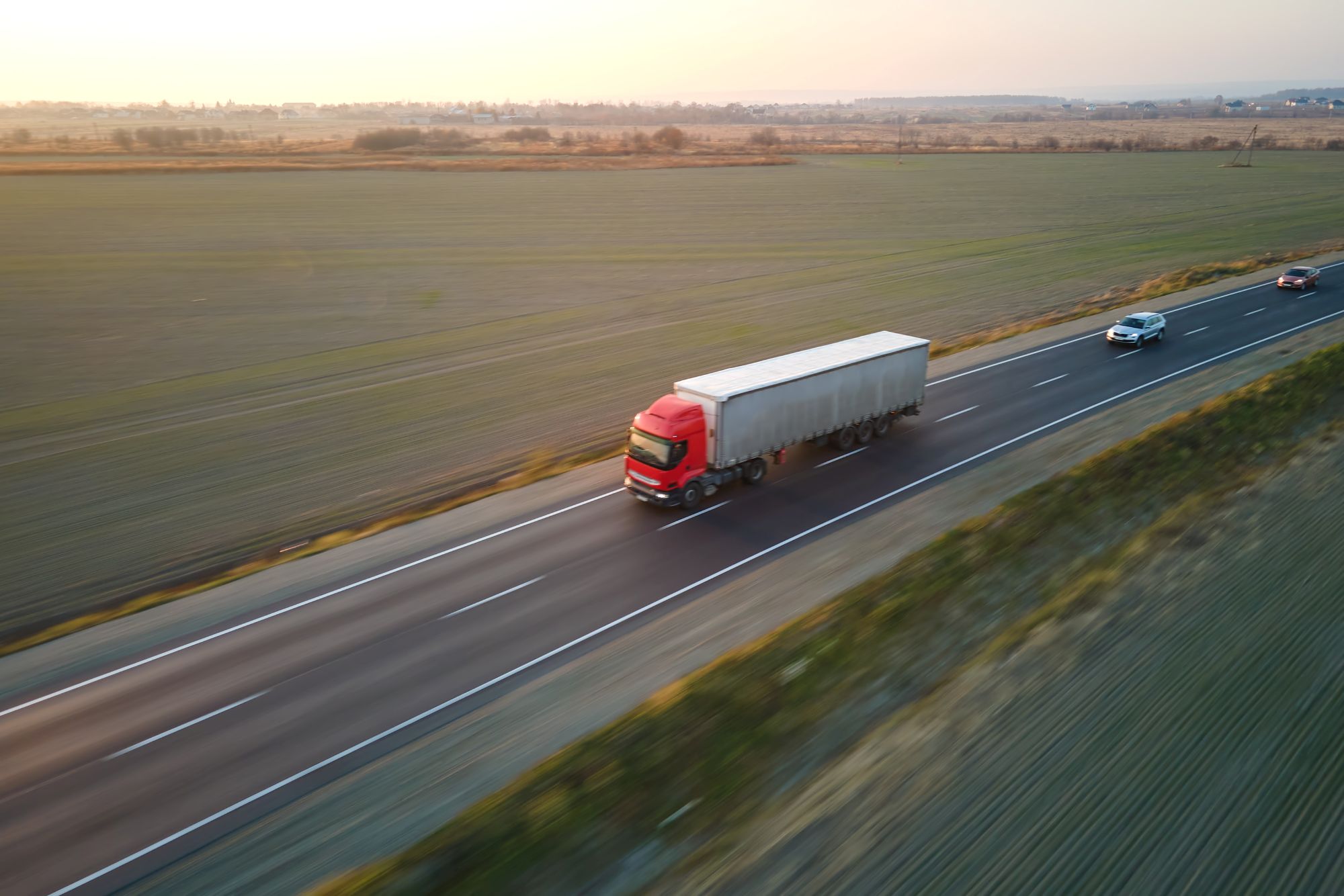
Susie Jones
Разбиране на новите ставки за пътни такси за камиони в Германия
Създаден: 12.08.2024
•
Актуализирано: 12.08.2024
При продължаващите промени в системата за пътни такси за товарни автомобили в Германия е лесно да се изгубите в множеството промени и разпоредби. Почти 83% от местните пътувания на камиони, обхващащи приблизително 200 километра, вече са по платени пътища - което подчертава въздействието на германските пътни такси върху разходите на автопарка.
С повишаването на таксите за изминато разстояние тези нови промени засягат сериозно компаниите, които се занимават с автопаркове. Промените в пътните такси през 2023 и 2024 г. са резултат от подкрепата на германското правителство на Закона за изменение на пътните такси, с който се приема следното:
Нови ставки на пътните такси
Въвеждането на такси за емисии на CO2
Премахване на освобождаването от пътни такси за превозни средства на природен газ
Разширяване на обхвата на таксата за изминат участък за превозни средства с допустимо общо тегло над 3,5 тона.
1 януари 2023 г. промени
Таксите за изминато разстояние се повишават в началото на 2023 г. Три фактора бяха решаващи:
Брой оси
Клас на емисиите
Допустимо общо тегло на състава от превозни средства.
промени на 1 декември 2023 г.
През декември бяха въведени класовете за емисии на CO2 като нов тарифен критерий. Тя се изчислява на базата на надбавка от 200 евро за тон емисии на CO2 и се налага на всички превозни средства с допустимо общо тегло над 7,5 тона. Индивидуалните размери на надбавките, в допълнение към настоящата такса, зависят от класа на емисиите.
Клас 1 - тежкотоварни превозни средства с най-високи емисии на CO2 и следователно с най-висока възможна надценка. TollCollect, която събира пътните такси за товарни автомобили в Германия, класифицира всички регистрирани превозни средства в този клас на емисии - операторите на автопаркове трябва да се свържат с нея, за да кандидатстват за по-добра класификация, ако отговарят на условията.
Класове 2 и 3 - двата класа се определят при въвеждане на данните за превозното средство в портала TollCollect.
Клас 4 - камиони с ниски емисии, например превозни средства на природен газ.
Клас 5 - камиони с нулеви емисии.
1 януари 2024 г. промени
На 1 януари 2024 г. освобождаването от пътни такси за превозни средства, задвижвани с природен газ, вече не се прилага.
промени на 1 юли 2024 г.
Таксите ще се дължат за всички превозни средства с технически допустимо общо тегло над 3,5 тона. Съществуват няколко изключения от тази нова промяна:
Превозни средства без вредни емисии с технически допустимо общо тегло над 4,25 тона.
Тежкотоварни превозни средства без емисии - това освобождаване е в сила до края на декември 2025 г.
Превозни средства, използвани от търговски предприятия - Приложимо за превозни средства с общо тегло под 7,5 тона.

Подготвяне на автопарка за промените през юли
Преди 1 юли ще трябва да проверите дали автомобилите ви подлежат на таксуване с пътна такса и ако подлежат, как да платите таксата.
Проверете автомобилите си
Проверете част първа от свидетелството за регистрация на превозното средство в поле F1. Ако технически допустимата максимална маса на натовареното превозно средство (TPMLM) е повече от 3,5 тона, подлежите на заплащане на пътна такса. Тежкотоварните превозни средства с TPMLM от точно 3,5 тона или по-малко не подлежат на плащане на пътна такса.
Комбинации от превозни средства - ако теглещото превозно средство има TPMLM над 3,5 тона, подлежите на таксуване. Комбинация от превозни средства с TPMLM над 3,5 тона не подлежи на таксуване, ако теглещото превозно средство има TPMLM от 3,5 тона или по-малко.
Изискванията за пътни такси се прилагат за превозни средства, предназначени или използвани за пътни превози.
Търговските предприятия са освободени от пътни такси при определени условия.
Как да платите таксата
Най-удобният начин за плащане е с бордово устройство (OBU) - предоставяно от Toll Collect, доставчиците на Европейската услуга за електронно събиране на пътни такси (EETS) или техните търговски партньори.
За да се плати с бордово устройство, е необходимо да се регистрирате в Toll Collect и да си уговорите среща за монтаж - след монтажа задайте теглото като "<7,5 тона". С бордово устройство автоматичното събиране на такси ще се извършва по магистралите и федералните пътища от 1 юли 2024 г.
Можете също така да платите пътната такса на сайта на Toll Collect [https://www.toll-collect.de/en/tollcollect/tchomepage.html] (https://www.toll-collect.de/en/tollcollect/tchomepage.html) или чрез тяхното [приложение] (https://apps.apple.com/gb/app/toll-collect-mauteinbuchung/id1321965602), преди да започнете пътуването си.
Освободен ли е моят автомобил за търговска дейност от новите германски пътни такси?
За да имате право на освобождаване от данък за занаятчии, трябва да се спазва следното:
Автомобилът може да се управлява само от служители на търговското предприятие.
Превозваните материали, оборудване или машини трябва да са необходими за извършване на услугите и работата на търговското предприятие.
Транспортираните ръчно изработени стоки трябва да са произведени, обработени или поправени в предприятието на търговеца.
Можете да регистрирате търговските си автомобили онлайн на адрес Toll Collect. Търговските предприятия могат да открият повече информация за изключенията на страницата FAQ на Toll Collect.
Могат ли камионите да карат в Германия в неделя?
Съществуват забрани за движение на товарни камиони в определени часове, за да се намали трафикът и да се осигури безопасността на пътищата. Забраната се прилага в неделя, което означава, че шофьорите на камиони с тегло над 7,5 тона не могат да ги придвижват от 12 до 22 ч. Освен това има забрана за шофиране и на следните официални празници:
Нова година - 1 януари
Разпети петък - 18 април
Великденски понеделник - 21 април
Ден на труда - 1 май
Ден на Възнесението - 29 май
Whitsun - 8 юни
Ден на обединението на Германия - 3 октомври
Коледа и Боксинг дей - 25-ти и 26-ти декември
По време на основния период на отпуски, от 1 юли до 31 август, забраната за управление на камиони се прилага в събота, което означава, че водачите на камиони нямат право да шофират между 7 и 20 ч., когато по пътищата се движат много превозни средства.



